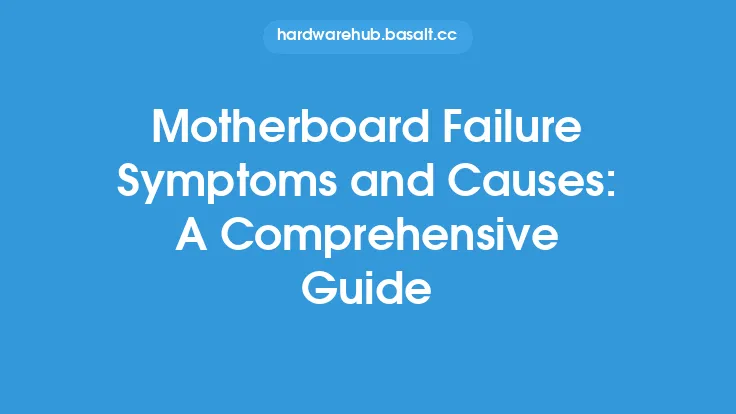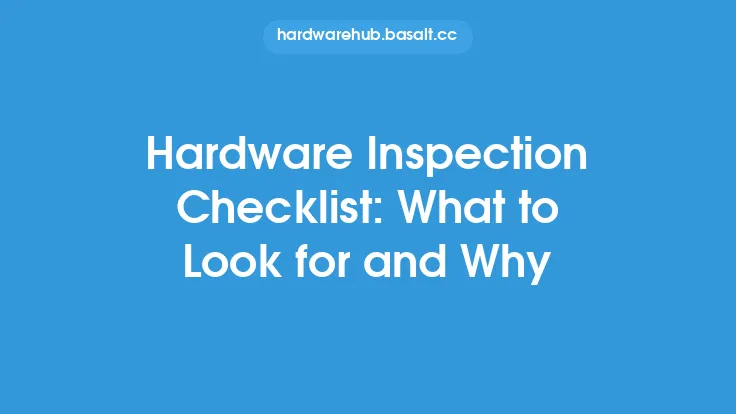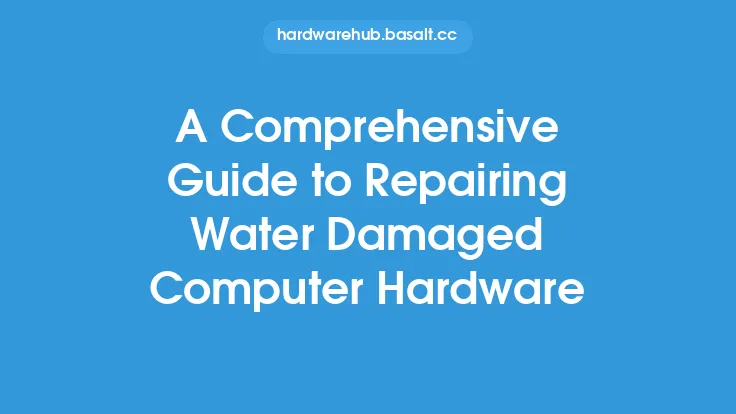When it comes to maintaining the health and performance of computer hardware, inspection techniques play a crucial role. Hardware inspection involves a thorough examination of the physical components of a computer system to identify any potential issues, defects, or signs of wear and tear. This process is essential in preventing hardware failures, reducing downtime, and ensuring optimal system performance. In this article, we will delve into the various hardware inspection techniques, their applications, and the tools used to perform these inspections.
Introduction to Hardware Inspection Techniques
Hardware inspection techniques can be broadly categorized into visual, functional, and diagnostic inspections. Visual inspections involve a thorough examination of the physical components of a computer system, looking for signs of damage, wear, and tear, or other visible defects. Functional inspections, on the other hand, involve testing the hardware components to ensure they are functioning as expected. Diagnostic inspections use specialized tools and software to identify potential issues or faults in the hardware.
Visual Inspection Techniques
Visual inspections are the most basic and essential type of hardware inspection. They involve a thorough examination of the physical components of a computer system, including the motherboard, CPU, memory, storage devices, power supply, and peripherals. During a visual inspection, the inspector looks for signs of physical damage, such as cracks, dents, or burn marks, as well as signs of wear and tear, such as dust buildup, corrosion, or loose connections. Visual inspections can be performed using a variety of tools, including magnifying glasses, flashlights, and inspection mirrors.
Functional Inspection Techniques
Functional inspections involve testing the hardware components to ensure they are functioning as expected. This type of inspection can be performed using a variety of tools and software, including diagnostic programs, benchmarking tools, and stress testing software. Functional inspections can help identify issues such as faulty memory, malfunctioning storage devices, or underperforming CPUs. They can also help identify issues with the power supply, such as voltage fluctuations or overheating.
Diagnostic Inspection Techniques
Diagnostic inspections use specialized tools and software to identify potential issues or faults in the hardware. This type of inspection can be performed using a variety of tools, including multimeters, oscilloscopes, and logic analyzers. Diagnostic inspections can help identify issues such as electrical faults, signal integrity problems, or thermal management issues. They can also help identify issues with the firmware or software, such as corrupted drivers or outdated BIOS.
Tools and Equipment Used in Hardware Inspection
A variety of tools and equipment are used in hardware inspection, including visual inspection tools, functional inspection tools, and diagnostic inspection tools. Visual inspection tools include magnifying glasses, flashlights, and inspection mirrors. Functional inspection tools include diagnostic programs, benchmarking tools, and stress testing software. Diagnostic inspection tools include multimeters, oscilloscopes, and logic analyzers. Other tools and equipment used in hardware inspection include thermal imaging cameras, acoustic emission sensors, and vibration analysis tools.
Best Practices for Hardware Inspection
To ensure effective and efficient hardware inspection, it is essential to follow best practices. These include developing a comprehensive inspection checklist, using the right tools and equipment, and documenting inspection results. It is also essential to perform inspections regularly, ideally as part of a preventive maintenance schedule. Additionally, inspectors should be trained and experienced in hardware inspection techniques, and should follow proper safety procedures when handling electrical components.
Common Challenges and Limitations of Hardware Inspection
Despite its importance, hardware inspection can be challenging and limited in several ways. One of the main challenges is the complexity of modern computer systems, which can make it difficult to identify and diagnose issues. Another challenge is the lack of standardization in hardware inspection techniques and tools, which can make it difficult to compare results and ensure consistency. Additionally, hardware inspection can be time-consuming and labor-intensive, especially for large and complex systems. Finally, hardware inspection may not always be able to identify issues, especially those that are intermittent or difficult to reproduce.
Future Developments and Trends in Hardware Inspection
The field of hardware inspection is constantly evolving, with new techniques, tools, and technologies being developed all the time. One of the main trends is the increasing use of automated inspection tools and software, which can help improve efficiency and accuracy. Another trend is the use of artificial intelligence and machine learning algorithms to analyze inspection data and identify potential issues. Additionally, there is a growing focus on predictive maintenance, which involves using inspection data and other information to predict when hardware components are likely to fail. Finally, there is a growing interest in the use of non-invasive inspection techniques, such as thermal imaging and acoustic emission testing, which can help reduce downtime and improve system availability.
Conclusion
In conclusion, hardware inspection techniques are essential for maintaining the health and performance of computer hardware. By using a combination of visual, functional, and diagnostic inspections, inspectors can identify potential issues and prevent hardware failures. The use of specialized tools and equipment, such as multimeters and oscilloscopes, can help improve the accuracy and efficiency of inspections. By following best practices and staying up-to-date with the latest developments and trends, inspectors can ensure that their hardware inspection techniques are effective and efficient. Whether you are a seasoned IT professional or just starting out, understanding the principles and techniques of hardware inspection is essential for ensuring the reliability and performance of computer systems.





